Beschreibung
In diesem umfassenden Leitfaden tauchen wir in die Welt der Korrosionssonden ein und untersuchen ihre Bedeutung für die Überwachung und Verhinderung von Korrosion. Korrosion ist eine anhaltende Herausforderung für Industrien auf der ganzen Welt, und eine wirksame Korrosionsüberwachung spielt eine entscheidende Rolle bei der Minderung ihrer schädlichen Auswirkungen. Indem wir die verschiedenen Aspekte von Korrosionssonden, ihre Typen, Anwendungen und Vorteile verstehen, können wir uns das nötige Wissen aneignen, um Korrosion effizienter zu bekämpfen.
Einführung in Korrosionssonden
Eine Korrosionssonde, auch als Instrument zur Überwachung der elektrochemischen Reaktion bezeichnet, wurde entwickelt, um Echtzeitdaten zur Korrosionsrate in bestimmten chemischen Umgebungen zu erfassen. Diese Sonden werden strategisch in direktem Kontakt mit metallischen Objekten oder Strukturen platziert, die anfällig für Korrosion sind. Durch die kontinuierliche Überwachung der Korrosionsrate liefern diese Sonden wertvolle Einblicke in die Wirksamkeit von Korrosionsschutzmaßnahmen und erleichtern eine proaktive Wartung, um katastrophale Ausfälle zu verhindern
 Bedeutung der Korrosionsüberwachung
Bedeutung der Korrosionsüberwachung
Die Korrosionsüberwachung ist ein entscheidendes Instrument zur Bekämpfung und zum Schutz vor Korrosion. Es ermöglicht Industrien, die Wirksamkeit von Korrosionsschutzmethoden wie dem kathodischen Schutz und der Verwendung von Korrosionsinhibitoren zu bewerten. Durch den Erhalt präziser Daten zur Korrosionsrate in Echtzeit können Unternehmen fundierte Entscheidungen treffen, um ihre Korrosionsschutzstrategien zu optimieren und Ressourcen effizienter zu verteilen.
Unterscheidung zwischen Korrosionsüberwachung und -inspektion
Zum besseren Verständnis ist es wichtig, zwischen Korrosionsüberwachung und Korrosionsinspektion zu unterscheiden. Bei der Korrosionsinspektion werden in der Regel häufige Kontrollpunkte durchgeführt, um Änderungen oder Abweichungen von den vorhergesagten Ergebnissen festzustellen. Andererseits ist die Korrosionsüberwachung ein kontinuierlicher Prozess, der eine zeitnahe Kontrolle und Intervention gegen Korrosion ermöglicht. Während die Inspektion darauf abzielt, die verbleibende Korrosionszeit für Korrekturmaßnahmen zu bewerten oder abzuschätzen, konzentriert sich die Überwachung auf die Prävention und kontinuierliche Verbesserung der Korrosionsschutzstrategien.
Online-Methoden zur Korrosionsüberwachung
Die Online-Korrosionsüberwachung basiert auf verschiedenen Techniken zur Messung und Analyse von Korrosionsraten. Lassen Sie uns zwei häufig verwendete Methoden untersuchen:
- Gutscheine zum Abnehmen
Gewichtsverlustgutscheine werden häufig bei der Online-Korrosionsüberwachung eingesetzt. Diese Coupons bestehen aus demselben Material wie das Rohr, der Tank oder das Gefäß, das auf Korrosion überwacht wird. Es stehen verschiedene Coupon-Formen wie Streifen-, Leiterstreifen-, Spülscheiben-, Mehrscheiben- und Skalencoupons zur Verfügung. Durch Messung des Gewichtsverlusts dieser Coupons im Laufe der Zeit kann die Korrosionsrate abgeschätzt werden. Diese Methode liefert wertvolle Daten zur Bewertung der Wirksamkeit von Korrosionsschutzmaßnahmen und zur Optimierung von Korrosionsschutzstrategien.
- Korrosionssonden für den elektrischen Widerstand (ER).
Elektrische Widerstandskorrosionssonden bieten ein weiteres effektives Mittel zur Online-Messung Korrosionsüberwachung. Es gibt sie in verschiedenen Ausführungen, die jeweils auf spezifische Anwendungen zugeschnitten sind. ER-Sonden messen die Korrosionsrate und übertragen die Daten mithilfe von tragbaren oder fest installierten Datenloggern oder Korrosionssendern an Steuerungssysteme. Zu den gängigen Arten von ER-Sonden gehören Spülsonden, zylindrische Sonden, Spiralschleifen, Drahtschleifen und Rohrschleifen. Diese Sonden ermöglichen die Echtzeitüberwachung der Korrosionsraten und ermöglichen eine schnelle Reaktion auf etwaige Abweichungen.
AVorteile von Korrosionssonden
Korrosionssonden bieten mehrere Vorteile, die sie für die Korrosionsüberwachung und -prävention unverzichtbar machen:
Echtzeitüberwachung der Korrosionsrate: Korrosionssonden liefern sofortige und genaue Daten zur Korrosionsrate, sodass proaktive Maßnahmen umgehend ergriffen werden können. Durch die Überwachung der Korrosion in Echtzeit können Industrieunternehmen das Risiko von Materialverschlechterung und Strukturversagen minimieren.
Optimierung von Korrosionsschutzmaßnahmen: Mit den von Korrosionssonden gewonnenen Daten können Unternehmen die Wirksamkeit ihrer bestehenden Korrosionsschutzmethoden bewerten. Diese Informationen ermöglichen es ihnen, ihre Strategien zu optimieren und gezielte Verbesserungen für einen verbesserten Korrosionsschutz umzusetzen.
Kosteneinsparungen und Ressourcenallokation: Durch die genaue Überwachung der Korrosionsraten können Industrien unnötige Ausgaben für übermäßige Korrosionsschutzmaßnahmen vermeiden. Korrosionssonden ermöglichen eine effizientere Ressourcenallokation, indem sie sicherstellen, dass vorbeugende Maßnahmen nur dann und dort ergriffen werden, wenn sie wirklich benötigt werden.
Frühzeitige Erkennung von Korrosionsproblemen: Korrosionssonden fungieren als Frühwarnsystem und liefern Einblicke in den Beginn korrosionsbedingter Probleme. Dies ermöglicht es der Industrie, schnell einzugreifen und das Risiko umfangreicher Schäden und kostspieliger Reparaturen zu minimieren.
Datengesteuerte Entscheidungsfindung: Die von Korrosionssonden gesammelten Daten bilden eine wertvolle Grundlage für datengesteuerte Entscheidungen. Durch die Analyse von Trends und Mustern der Korrosionsraten können Unternehmen fundierte Entscheidungen hinsichtlich Wartungsplänen, Materialauswahl und Korrosionsschutzstrategien treffen.
Einhaltung gesetzlicher Standards: Viele Branchen unterliegen behördlichen Standards und Anforderungen zum Korrosionsschutz. Korrosionssonden helfen bei der Einhaltung der Vorschriften, indem sie genaue Daten zur Korrosionsrate liefern und die Überwachung und Berichterstattung erleichtern, die zur Erfüllung gesetzlicher Verpflichtungen erforderlich sind.
Verbesserte Langlebigkeit der Ausrüstung: Eine effektive Korrosionsüberwachung, die durch Korrosionssonden ermöglicht wird, trägt zur Langlebigkeit und Zuverlässigkeit von Geräten und Strukturen bei. Durch frühzeitiges Erkennen und Bekämpfen von Korrosion können Branchen die Lebensdauer ihrer Anlagen verlängern und so den Bedarf an vorzeitigem Austausch und die damit verbundenen Kosten reduzieren.
Erhöhte Sicherheit: Korrosionsbedingte Ausfälle können ein Sicherheitsrisiko für Personal und Umwelt darstellen. Korrosionssonden spielen eine entscheidende Rolle bei der Gewährleistung der Integrität von Strukturen und Geräten, wodurch die Sicherheit erhöht und das Risiko von Unfällen oder Umweltvorfällen minimiert wird.
Zusammenfassend lässt sich sagen, dass Korrosionssonden unverzichtbare Hilfsmittel im Kampf gegen Korrosion sind. Durch die Bereitstellung präziser Korrosionsratendaten in Echtzeit ermöglichen diese Sonden der Industrie, ihre Korrosionsschutzstrategien zu optimieren, Ressourcen effizient zuzuteilen und die Einhaltung gesetzlicher Standards sicherzustellen. Die Vorteile von Korrosionssonden gehen über Kosteneinsparungen hinaus und umfassen eine längere Lebensdauer der Ausrüstung, mehr Sicherheit und proaktive Wartung, um katastrophale Ausfälle zu verhindern. Durch die Einbindung von Korrosionssonden in Korrosionsüberwachungsprogramme sind Industrien der Korrosion immer einen Schritt voraus, schützen ihre Anlagen und sorgen für betriebliche Exzellenz.
Häufig gestellte Fragen
F1: Was ist Korrosionsüberwachung?
A1: Korrosionsüberwachung bezieht sich auf den Einsatz spezifischer Methoden und Geräte. Dabei geht es darum, den allmählichen Abbau von Materialien zu verfolgen und zu beobachten, der durch verschiedene Faktoren wie Chemikalien, elektrochemische Reaktionen oder Umweltbedingungen verursacht wird. Der Zweck der Korrosionsüberwachung besteht darin, eine bessere Pflege, Vorbeugung und die Umsetzung wirksamer Maßnahmen zur Korrosionsbekämpfung und zum Schutz von Vermögenswerten vor Verfall zu ermöglichen.
F2: Warum ist die Korrosionsüberwachung wichtig?
A2: Die Korrosionsüberwachung ist von entscheidender Bedeutung, da sie dazu beiträgt, die negativen Auswirkungen von Korrosion auf Industrieanlagen zu mildern. Ohne ordnungsgemäße Überwachung kann Korrosion zu Anlagenausfällen, Lecks, verminderter Leistung, Sicherheitsrisiken, erhöhten Kosten und Umweltschäden führen. Durch die aktive Überwachung von Korrosion kann man deren Vorhandensein erkennen, ihr Fortschreiten verfolgen und vorbeugende Maßnahmen ergreifen, bevor sie einen kritischen Punkt erreicht. Dieser proaktive Ansatz reduziert die Wartungskosten, verbessert die Lebensdauer der Anlagen, erhöht die Zuverlässigkeit und sorgt für Sicherheit.
F3: Was ist der Unterschied zwischen Korrosionsinspektion und Korrosionsüberwachung?
A3: Obwohl Korrosionsinspektion und Korrosionsüberwachung verwandt sind, dienen sie unterschiedlichen Zwecken. Die Korrosionsinspektion umfasst regelmäßige Beurteilungen der gesamten Anlage, um etwaige Änderungen oder Abweichungen von den erwarteten Ergebnissen festzustellen. Ziel ist es, Korrosion zu bewerten und festzustellen, ob Reparaturen oder Ersatz erforderlich sind. Andererseits konzentriert sich die Korrosionsüberwachung auf die kontinuierliche Beobachtung bestimmter Bereiche oder Abschnitte einer Anlage, um Veränderungen schnell zu erkennen und darauf zu reagieren. Sein Zweck besteht darin, Korrosion zu verhindern und vorbeugende Maßnahmen zu verbessern, und nicht darin, die Korrosionszeit für einen Austausch oder eine Reparatur abzuschätzen.
F4: Welche Methoden werden für die Online-Korrosionsüberwachung verwendet?
A4: Bei der Online-Korrosionsüberwachung werden verschiedene Methoden eingesetzt, um die Korrosion kontinuierlich zu überwachen. Zu den häufig verwendeten Methoden gehören:
1. Gewichtsverlust-Coupons: Diese Coupons bestehen aus demselben Material wie das überwachte Rohr oder Gefäß und werden in das System eingelegt, um die Korrosion durch Gewichtsverlust zu messen.
2. Korrosionssonden für den elektrischen Widerstand (ER): ER-Sonden messen Korrosionsraten, indem sie Änderungen im elektrischen Widerstand überwachen. Es gibt sie in verschiedenen Ausführungen, z. B. bündig, zylindrisch, Spiralschleife, Drahtschleife und Rohrschleife.
3. Linearpolare Widerstandssonden: Diese Sonden werden hauptsächlich in der Wasserindustrie zur Überwachung von Korrosionsschwankungen in leitfähigen Flüssigkeiten wie Wasser verwendet.
4. Online-Ultraschalldickensensoren: Nicht-intrusive Ultraschallsensoren messen die Dicke von Metallstrukturen ohne physischen Zugriff oder Unterbrechung. Sie liefern genaue und zuverlässige Daten zur frühzeitigen Korrosionserkennung.
5. Wasserstoffsonden: Wasserstoffsonden überwachen das Eindringen von Wasserstoff in Stähle, was zu Sprödigkeit, Porosität oder Entkarbonisierung führen kann.
6. Sandsonden: Sie werden zur Überwachung von durch Erosion oder Verschleiß verursachter Korrosion eingesetzt, typischerweise in Gasleitungen, wo die Flüssigkeitsgeschwindigkeit Erosion verursacht.
7. Biologische Sonden (Biosonden): Biosonden sammeln Proben für die mikrobiologische Analyse, um die durch Mikroorganismen beschleunigte Korrosion zu überwachen.
F5: Welche Hauptausrüstungsteile werden in Korrosionsüberwachungssystemen verwendet?
A5: Zusätzlich zu den verschiedenen Sonden verwenden Korrosionsüberwachungssysteme spezielle Geräte für eine effektive Überwachung. Zur Hauptausstattung gehören:
1. Zugangsarmaturen: Diese Armaturen, wie z. B. Flansch- oder Bördelschweißverbindungen, ermöglichen den Zugang zu Korrosionsproben und Sonden.
2. Couponhalter: Diese Halter dienen zur Befestigung von Korrosionscoupons in Rohren oder Tanks und werden an massiven oder hohlen Stopfen befestigt. Übliche Materialien für Couponhalter sind Edelstahl 316/316L, Monel und Inconel.
3. Serviceventile: Serviceventile vom Kugeltyp werden eingesetzt, um den Flüssigkeitsfluss beim Austausch von Korrosionsproben oder Sonden zu blockieren. Die Befestigung an Voll- oder Hohldübeln erfolgt nach Entfernung der Anschlussbeschlagsabdeckung.
4. Retriever: Retriever werden zum Einführen und Entfernen von Korrosionsproben und -sonden verwendet, ohne den Prozess zu unterbrechen. Es gibt sie in hydraulischer und mechanischer Ausführung.
5. Zusätzliche Ressourcen wie Zugangsplattformen und Datenlogger.

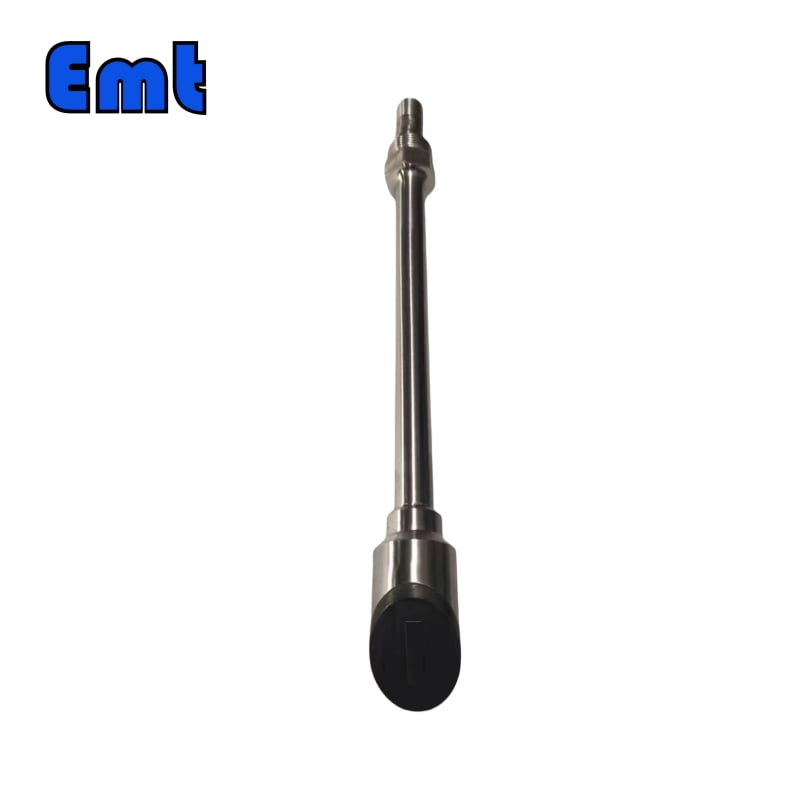
 Bedeutung der Korrosionsüberwachung
Bedeutung der Korrosionsüberwachung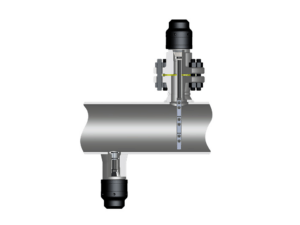

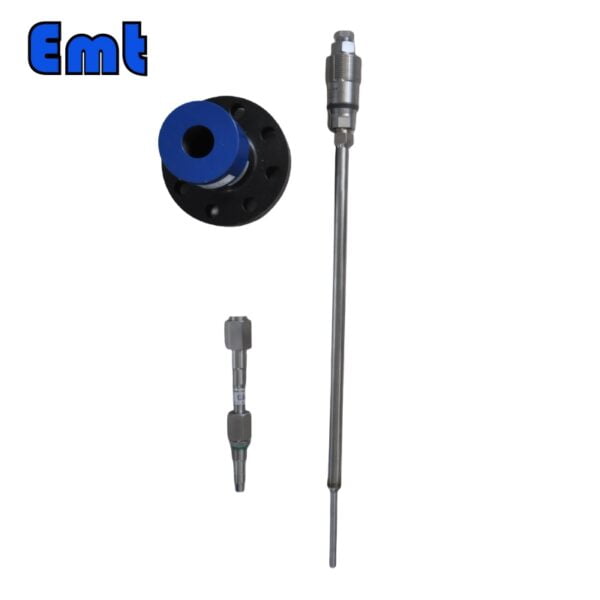
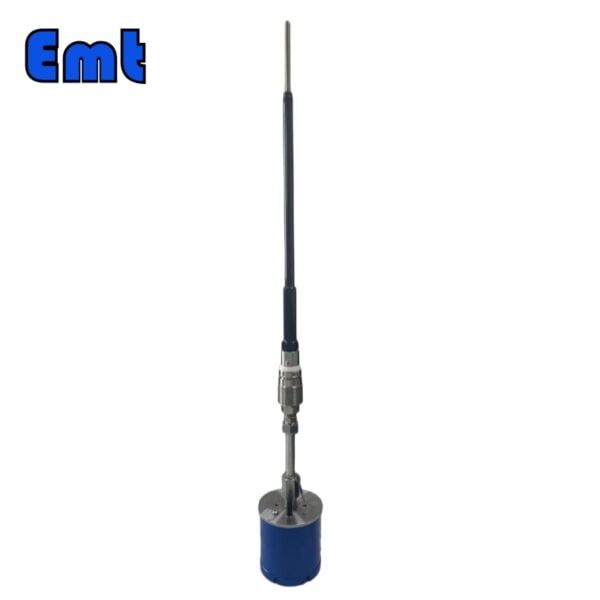
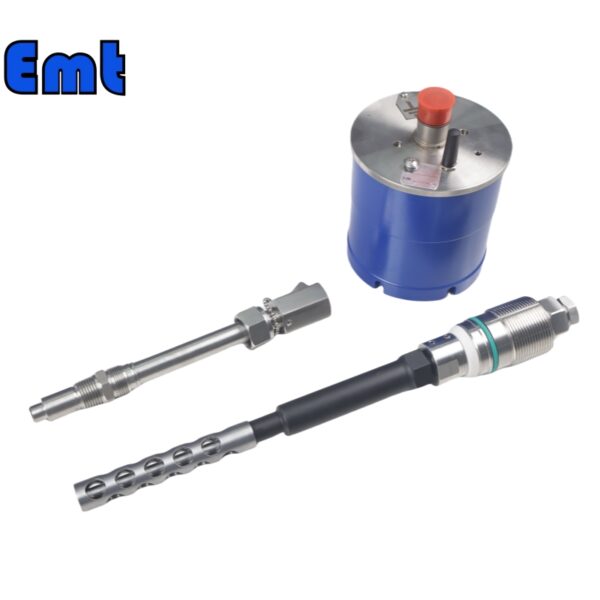
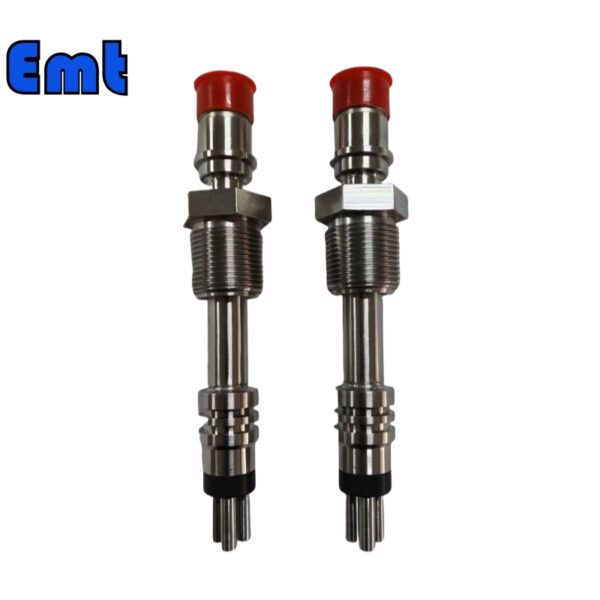
Rezensionen
Es gibt noch keine Bewertungen.